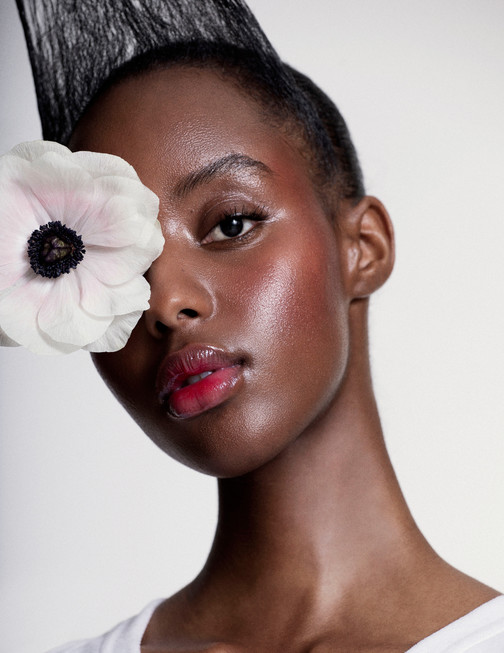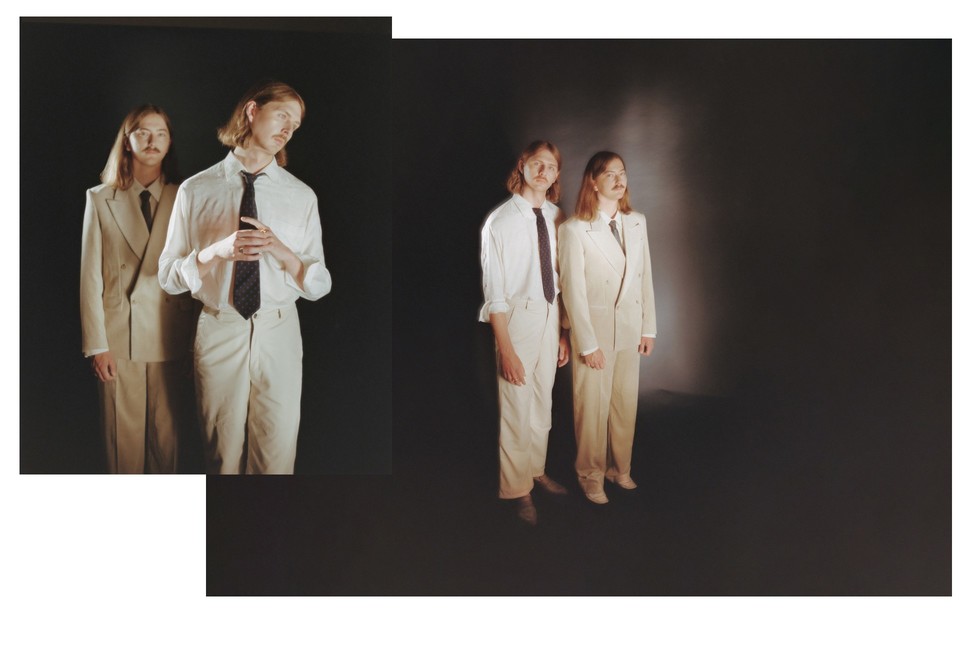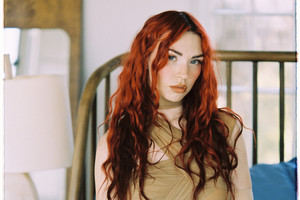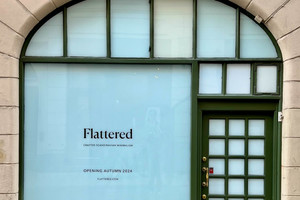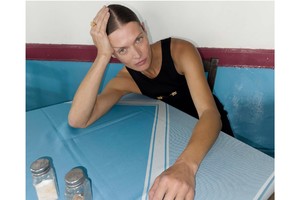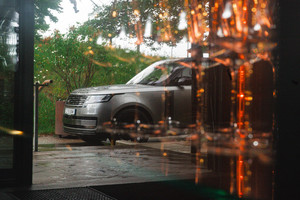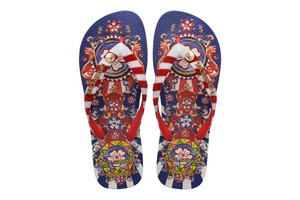Tomode, composed of Carl Leandersson and Viktor Westerberg, finds inspiration for its songs in “French touch” house music as well as each member’s personal life experiences, dreams, moods, and aspirations. The duo looks up to groups such as Daft Punk and Earth, Wind, and Fire–if that gives you a good idea of Tomode’s disco-electronic sound.
Leandersson and Westerberg met while studying at the same choir school in Stockholm. Westerberg had heard of Leandersson’s band, which was playing ska and jazz music, and wanted to be a part of it. Westerberg said he first started with percussion and then moved to keys because of his piano background. In high school, Westerberg said the two started playing together more and writing songs together, while the other bandmates left to pursue other life paths. When it was just the two of them left, Tomode was born.
What inspired your name?
VW: Everyone asks that. I lived in Tokyo for a little while, and you know, with [the] Japanese [language], they don't have letters, they have syllables. And just for fun, when I was learning Japanese, I started just combining different letters. Leanderson arrived for the interview and got caught up on the question.
CL: Everyone asks the same question.
VW: So I think I started combining those kinds of letters. Then we played around with some different names. And then we just found Tomode. I think it's nice because it doesn't actually mean anything, but it sounds interesting. So you can fill it with your own meaning. The music stands for itself. It's like with Daft Punk, no one knows what it really means. But it still has a particular feeling. So I think that's the easy answer. Do you have a better answer?
CL: No, no. I mean, Daft Punk was a review of the music. It sounded like a daft punk band.
Your music sounds kind of disco and indie pop inspired. What artists inspired your sound?
CL: Daft Punk.
VW: That’s very easy. It's a big one.
CL: Random Access Memories was probably the first first album that we bonded with eachnother over. We weren't really that close before that album came out. So I think we've bonded a lot around that album.
VW: I think that Daft Punk is a super big one, of course. And then this French label called Ed Banger has an artist called Breakbot. It's that sort of synthy ’70s-inspired disco, but it's also a bit futuristic. It's not taking itself too seriously. We also bonded a lot over Earth, Wind, and Fire [and] Chic. From the beginning, we had that sort of electronic disco, classic Daft Punk sound. But Random Access Memories, that album was so cool because it combined both of those–thatold retro sound with a futuristic edge. I think somewhere around there we thought that this is something we want to keep going with.
So you released your most recent EP Riviera in April. Can you talk about your process of writing it and what kind of inspired the songs?
CL: Yeah, I mean it was mostly Viktor’s idea, to be honest. He wanted to do a concept EP with a lot of sunny inspirations.
VW: It's so easy to talk about disco music and sound as being sunny and disco but I still felt thatsomewhere underneath that sound or in general life, there's some kind of melancholy still underneath the surface of this shiny, luxurious disco yacht environment. And I also travelled abroad–I went to Italy. I always felt that in those moments, when you were sitting by the pool, watching the sunset, of course, it's beautiful. But there's something lurking underneath that's kind of melancholy. And I think that's what our sound has developed into–some kind of ’70s disco, but then there's this Scandinavian melancholy hiding inside it. That was the start of that–sitting by the pool, the sunrise, everything being beautiful, but still something being a bit off, you know? We started writing a bit with that in mind. Being in Sweden, it's dark, it's cold, sometimes the winters are really long. So in the studio, we sort of just travelled to this imaginary beach town, and just wrote the tracks there, in our mind. I think that was the inspiration.
How do you think this EP has grown from your first one, Synergy?
CL: More listeners?
VW: That’s definitely one of them. But when I listened to the old EP and the new one, I think we were still searching for our sound. It's like, we love a bit of indie rock, and then we love a bit of indie pop, and then we love electronic music, and we were sort of still finding our way. That's very beautiful in itself, painting the map of your sound. Riviera had a bit more focus. It's more cohesive. I think that's the biggest difference. It's very noticeable when we play live. So when we play songs from Riviera, it's quite cohesive with the chords, chord. structures, the harmonies, [and] the feelings are quite similar. Then when we play the songs from Synergy, it's a bit all over the place. The different influences are quite a bit wider.
Your most streamed song on Spotify is “Forget About It” with Antoine Chambe. Can you talk about how the song came together and what it was like working with him?
VW: This is a question for you.
CL: He's on the same record label and he wanted to do a song with us. So he sends an instrumental to us. [But we] couldn't download it from SoundCloud, so I just ripped it off of his SoundCloud, [and] it was very low quality. Then we just recorded our own vocals on it and sent it to him as a demo. We didn't hear anything for like half a year, and then it came back. Or [actually] he did reply immediately. [He] said you can work on it more.
VW: “I love the chorus, the first verse needs a bit more work.”
CL: And then half a year later. He says, “Okay, I want to master this and we're gonna release it.”
The SoundCloud one?
VW: Yes! Which I think makes the track more interesting. But it's like, you know, not hearing anything for that long of a time, and then he's just like “okay, so the track is mastered and going to be released.”
Can you talk about your song “Golden Retriever” and the graphic that's on your website that goes along with it?
CL: I mean, it was written as a joke, or is a joke, I guess. It was much more electronic in the beginning. But we took some advice from some manager who said that we should try to do it more ’80s rock [style]. And that's what ended up being. But the graphic designer actually is someone Viktor was in contact with who he knew from earlier.
VW: The song cover is actually your dog.
CL: That's my dog.
VW: Who is not a golden retriever, unfortunately.
CL: He’s a Labrador Retriever who becomes a golden retriever in the music video.
VW: He transforms in the chorus. With the graphic, I think [Carl] had inspiration from some sort of Disney video where I think Mickey Mouse painted a world in colour or something. And I think we sent that to a graphic designer, Karolin Gu. She's really super talented and has this very comical, very vibrant style. So we sent that to her and sent the song. She really liked the song, which was so cool. And then she came back with some sketches. We worked on it, and then instantly, we knew that it had such a good vibe. The vibe was just so clear and beautiful and full of life. That's the whole sort of essence of the song. It’s like even though he’s not a golden retriever he sort of becomes one in the chorus. It's that kind of attitude to life, you know?
When you travel around Europe, what's your favourite place you've performed?
CL: Denmark has always been good.
VW: Yeah, Denmark always has a good vibe. The crowd is super warm. I thought it was really cool to play in Paris. When we played in February, [we were] talking about musical influences, like a “French touch,” disco sound. I think it was so cool because we played there and everyone we talked to knew all the references. It's almost biological to them. They know that kind of music so well. So I felt like we were kind of at home in Paris.
What would you say is your main inspiration when you're writing songs?
CL: Depends on what mood you're in.
VW: For me, it's definitely the chords. Chords for me are like a secret language. [They] evoke so much emotion. I can either hear a chord progression in another song or just hear one in my head, and it's so clear what it feels like. It could be the other way around that you just experience something in everyday life, and you get a particular feeling, and you want to translate it into a chord structure. So for me, that's always the starting point. I actually heard like, you know, Pharrell Williams, he said what he tries to do is get a feeling [and try] to reverse engineer the feeling into a musical track. If you figure out chords that might give you the same feeling, it's like you've sort of deciphered something really cool.
To add onto that, do you try to create the same feeling in your live shows?
CL: The live shows are much more energetic. We usually play the songs faster and with more instrumental parts. So the songs are much longer. There's a lot of jamming around.
VW: Turning [the songs] into something different…I think that's the most enjoyable thing about playing live.
You said you had been working on a new song in the studio this week. Can you talk a little bit about what it's about and what direction you are going with it?
CL: It’s with Antoine again.
VW: It's called “Reverie.” We've been discussing it a bit as well [as] being on the border between what's real, like your normal life .. and then every time you close your eyes and every time you relax, something comes back to you. We got the idea and then we wanted to make it work. I think it's sort of about being on that border and being haunted by your dreams.




